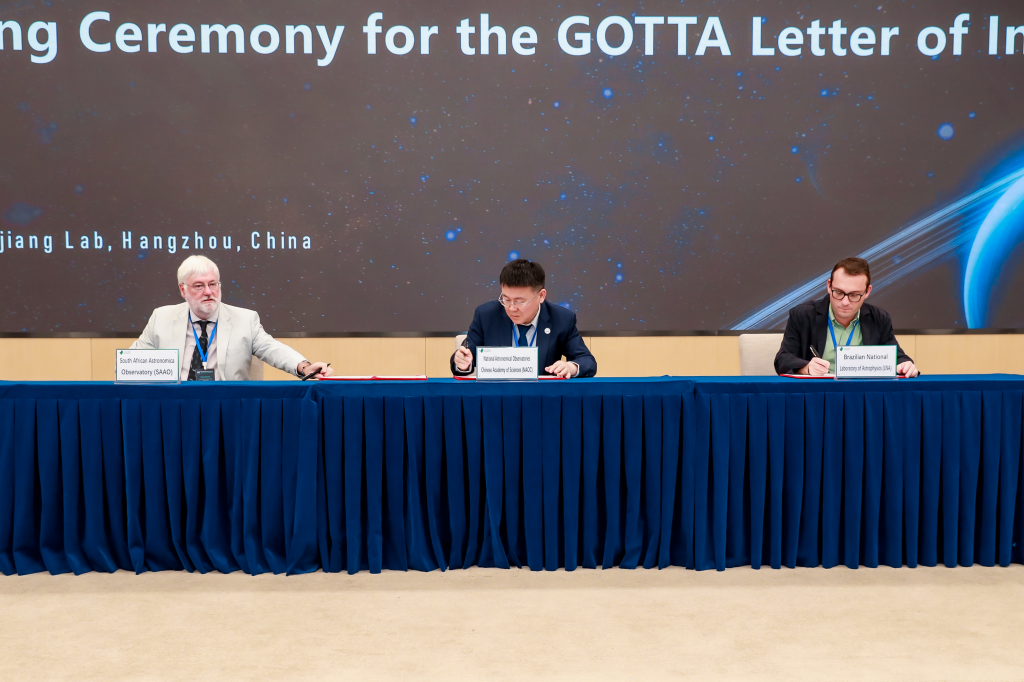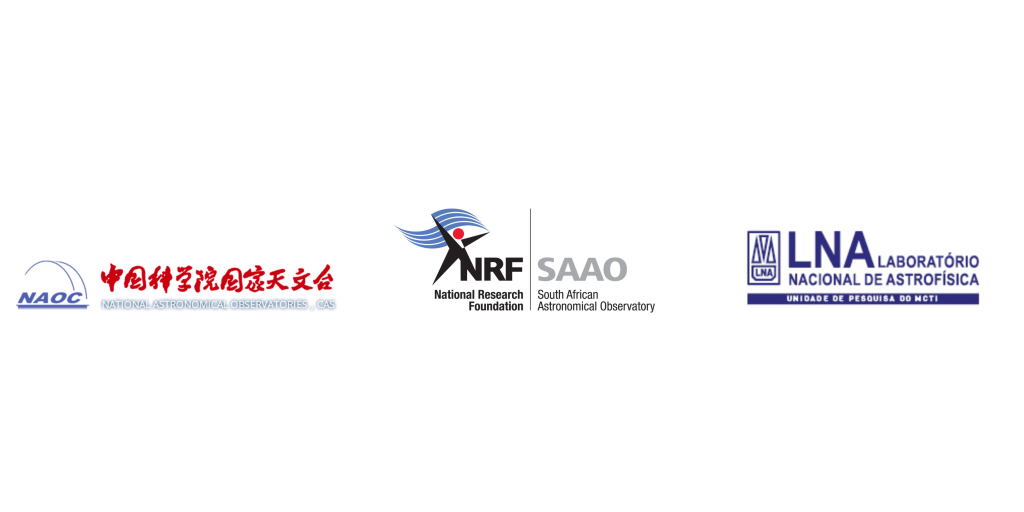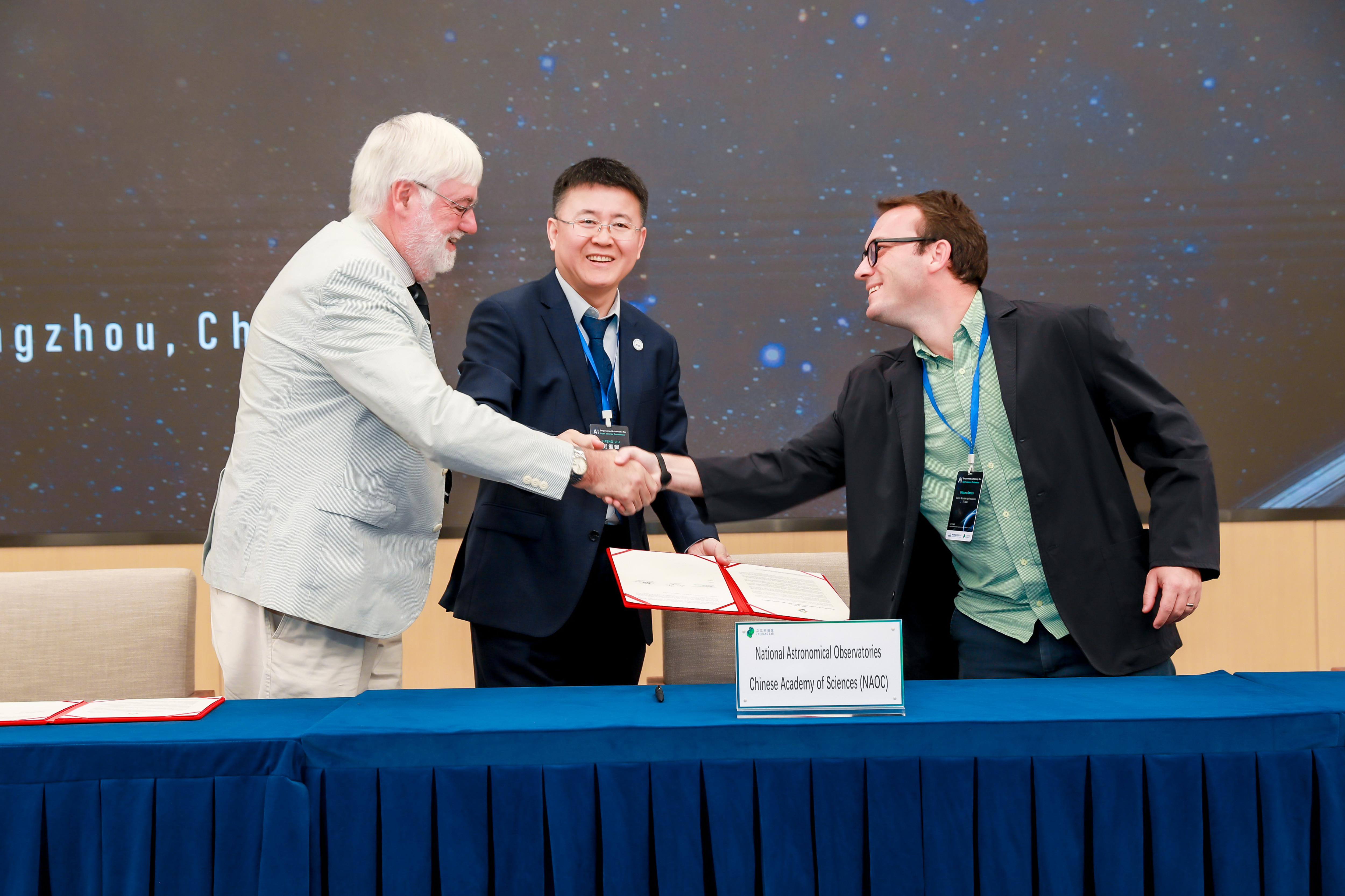
17 April 2025
Zhejiang Lab and the National Astronomical Observatories, Chinese Academy of Sciences (NAOC) successfully hosted the AI-Empowered Astronomy for Open Science conference from 7 – 9 April 2025 at the Zhejiang Lab in Hangzhou, China. The event convened global experts to explore AI-driven infrastructure for astronomical mega-projects, emphasising sustainable and equitable solutions to transform research, education, and outreach.
A key highlight was the signing of the Global Open Transient Telescope Array (GOTTA) Letter of Intent by the BRICS partner countries. The GOTTA envisions a scalable network of meter-sized Schmidt telescopes, with each telescope costing approximately $4 million, and plans to deploy over 100 such telescopes worldwide to scan the night sky every 30 minutes, using intelligent systems for scheduling, data management, and follow-up observations.
The GOTTA project enhances astronomy education and outreach by providing access to the GOTTA Event Horizon Cyber-Telescopes for the public, schools, and enthusiasts. It engages non-professional astronomers with scientific resources, research opportunities, and high-quality data, while also producing educational images and videos to raise awareness about light pollution and dark sky preservation. GOTTA also promotes equity in scientific research through an open-access platform, supporting collaboration with scientists from underrepresented regions, including Africa, to strengthen the global astronomy community.
This initiative builds on the BRICS Astronomy flagship project, the BRICS Intelligent Telescope and Data Network (BITDN), developed in 2019 under the BRICS Astronomy Working Group (BAWG). It is a groundbreaking initiative to establish a global optical telescope network across BRICS nations. This network, inspired by the SiTian telescope design, aims to provide continuous, full-sky coverage for studying transient and variable multi-wavelength phenomena. BITDN marks the first BRICS-led Research Infrastructure, fostering technological innovation and capacity-building within the bloc. Beyond its scientific goals, BITDN prioritises societal impact through robust outreach, education, and development programs, including skills development training, scholarships, and science communication initiatives, just to name a few, to empower communities and foster widespread engagement.
It will also address big-data challenges through collaborative AI and machine learning advancements, complementing global projects like the Rubin Telescope and Square Kilometer Array. As a critical next step, NAOC, Brazil’s National Laboratory of Astrophysics (LNA), and the South African Astronomical Observatory (SAAO) expressed their commitment through a Letter of Intent to develop a prototype network with sites in Brazil, China, and South Africa. This preparatory program will validate the feasibility and cost-effectiveness of the intelligent observatory model. The collaboration leverages NAOC’s SiTian telescope expertise and the hosting capabilities of LNA and SAAO.
A formal agreement to construct and operate the prototype BITDN is expected to be signed at the BAWG meeting to be held in Brazil in October 2025. The program remains open to additional BRICS and global partners, inviting broader collaboration to shape the future of global astronomy.
Contact:
BRICS Astronomy
Duduzile Kubheka – BRICS Astronomy Coordinator
Email: duduzile@saao.ac.za
Project PIs
China
Prof Jifeng Liu
Email: jfliu@nao.cas.cn
Brazil
Dr Ulisses Barres
Email: ulisses@cbpf.br
South Africa
Prof David Buckley
Email: dibnob@saao.ac.za


